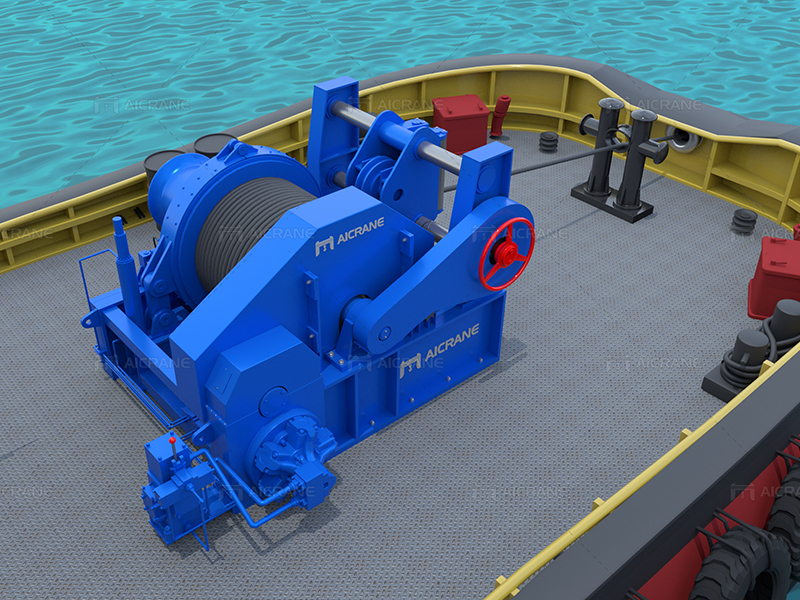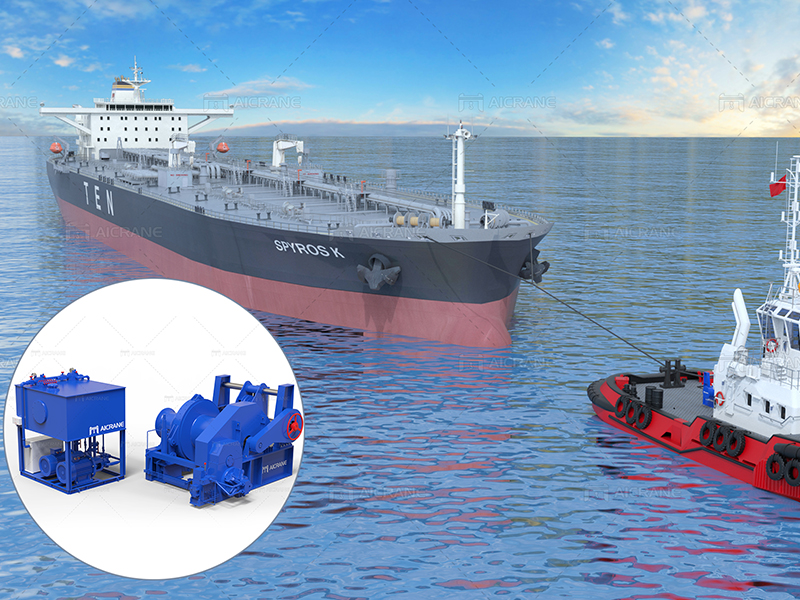On the vast expanse of the open seas, towing operations play a pivotal role in maritime activities. Whether it’s assisting vessels in distress, maneuvering through busy harbors, or aiding in offshore activities, the reliability and efficiency of towing operations are critical. At the heart of many of these operations is the marine towing winch, a specialized piece of equipment designed to handle a diverse range of tasks. In this article, we explore the types of towing operations that marine towing winches can expertly manage, showcasing their versatility and significance in the maritime industry.

Harbor Towing:
One of the most common and essential towing operations is harbor towing. Marine towing winches are frequently employed to assist vessels entering and leaving harbors, guiding them safely through narrow channels and busy waterways. These winches play a crucial role in maintaining order and preventing maritime congestion.
Deep-Sea Towing:
Beyond the harbor, marine towing winches are instrumental in deep-sea towing operations. This involves towing large vessels, such as oil rigs, platforms, or even decommissioned ships, over long distances. The winch’s robust design and high towing capacities make it well-suited for such challenging tasks.
Anchor Handling:
Towing winches are often equipped for anchor handling operations. This includes deploying, retrieving, and securing anchors. The winch’s power and control capabilities ensure precise anchor handling, a critical function in offshore activities such as oil and gas exploration.
Salvage Operations:
When vessels face distress or accidents, marine towing winches become indispensable in salvage operations. These winches assist in recovering and towing damaged or stranded vessels to safety. Their ability to exert controlled force is crucial in delicate salvage scenarios.
Towing of Barges and Cargo Vessels:
Cargo vessels and barges transporting goods may require towing assistance in adverse conditions or emergencies. Marine towing winches facilitate the safe and efficient towing of these vessels, ensuring the protection of valuable cargo and the safety of the crew.

Ice Management and Icebreaking:
In regions with icy conditions, specialized marine towing winches are employed for ice management and icebreaking operations. These marine winches assist vessels in navigating through ice-covered waters, breaking ice formations, and ensuring safe passage.
Offshore Oil and Gas Operations:
The offshore oil and gas industry heavily relies on marine towing winches for various tasks. From towing and positioning oil rigs to handling anchors and assisting in platform installations, these winches contribute significantly to the success of offshore operations.
Towing of Floating Structures:
Floating structures such as floating docks, pontoons, and other maritime installations may require towing for repositioning or relocation. Marine towing winches provide the necessary power and control for moving these structures efficiently.
Towing for Bridge Construction:
In bridge construction over water bodies, marine towing winches play a role in towing construction materials, pontoons, or bridge sections into position. This ensures precise placement and contributes to the seamless construction of bridges.
Emergency Towing of Disabled Vessels:
When vessels experience engine failure or other mechanical issues, marine towing winches are called upon for emergency towing. This rapid response capability is crucial in preventing accidents and ensuring the safety of both vessels and crew.
Dynamic Positioning Assistance:
Marine towing winches can assist vessels equipped with dynamic positioning systems. By providing additional control and stability, these winches contribute to maintaining a vessel’s position in dynamic and challenging offshore environments.
Towing for Dredging Operations:
Dredging operations often involve the movement of dredgers and equipment. Marine towing winches aid in towing these vessels to different locations, facilitating efficient dredging activities for harbor maintenance and waterway improvement.
Towing of Subsea Equipment:
Subsea equipment, such as pipelines, cables, or underwater structures, may require towing during installation or maintenance. Marine towing winches with precise control capabilities ensure the safe and accurate handling of subsea loads.
Towing for Environmental Response:
In the event of environmental incidents, such as oil spills, marine towing winches assist in towing response vessels equipped for cleanup operations. This ensures a swift and organized response to environmental emergencies.
Cable Laying Operations:
Marine towing winches are involved in cable laying operations, where underwater cables are towed and laid on the seabed. This is common in projects involving telecommunications, offshore energy, and other subsea infrastructure.
Towing for Floating Wind Farms:
With the growing interest in renewable energy, marine towing winches play a role in towing and positioning floating wind turbines for offshore wind farm installations.
Conclusion:
The multifaceted capabilities of marine towing winches make them indispensable in a wide array of towing operations across the maritime industry. From harbor maneuvers to deep-sea tows, these robust machines ensure the safety, efficiency, and success of critical maritime activities. As technology continues to advance, marine towing winches will likely evolve to meet new challenges, contributing to the continued growth and innovation within the maritime sector. For more info, visit https://steelmillcranes.com/
